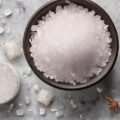Living with eczema can be challenging, but there are effective ways to manage symptoms and find relief. One surprising yet simple treatment that many find helpful is taking bleach baths. While the idea of bathing in bleach may sound harsh, when done properly, bleach baths can be a gentle and soothing therapy for eczema-prone skin. This article will explore how bleach baths work, their benefits, and how to safely incorporate them into your eczema care routine.
Understanding Eczema and Its Challenges
Eczema, also known as atopic dermatitis, is a chronic skin condition characterized by dry, itchy, and inflamed skin. It can cause significant discomfort and affect one’s quality of life. People with eczema often struggle with persistent itching, redness, and skin infections. Finding effective treatments is crucial for managing symptoms and preventing flare-ups.
How Bleach Baths Can Help
Bleach baths work by reducing bacteria on the skin, which can help prevent infections and reduce inflammation. The diluted bleach acts as an antimicrobial agent, similar to chlorine in swimming pools. By lowering the bacterial load on the skin, bleach baths can:
- Decrease itching and irritation
- Reduce redness and inflammation
- Help prevent skin infections
- Promote healing of damaged skin
Many people with eczema find that regular bleach baths help to calm their skin and provide relief from symptoms. It’s a gentle, at-home treatment that can complement other eczema management strategies.
Preparing a Safe Bleach Bath
The key to effective and safe bleach baths is proper dilution. Here’s how to prepare a bleach bath:
- Fill a standard bathtub with warm (not hot) water to the overflow drainage holes.
- Add 1/4 to 1/2 cup of regular strength (6%) household bleach. Use less for smaller tubs or for children.
- Mix the water well to ensure the bleach is evenly distributed.
- Soak in the bath for 5-10 minutes. Do not submerge your head.
- Rinse your body thoroughly with clean, warm water after the bath.
- Gently pat your skin dry with a soft towel.
- Apply your regular moisturizer immediately after bathing.
It’s important to use regular strength household bleach, not concentrated bleach or bleach with added fragrances or other chemicals. Always consult with your healthcare provider before starting bleach bath therapy, especially for children or if you have open wounds.
Incorporating Bleach Baths into Your Eczema Care Routine
For most people, taking a bleach bath 2-3 times a week can be beneficial. However, the frequency may vary depending on your individual needs and how your skin responds. Some tips for incorporating bleach baths into your routine:
- Start slowly, perhaps once a week, and gradually increase frequency if needed.
- Pay attention to how your skin reacts and adjust accordingly.
- Combine bleach baths with your regular skincare routine, including gentle cleansers and moisturizers.
- Don’t use bleach baths as a replacement for other prescribed treatments without consulting your doctor.
- Be consistent with your bleach bath schedule for best results.
Remember, bleach baths are just one tool in managing eczema. A comprehensive approach including proper skincare, trigger avoidance, and medical treatments as needed is often most effective.
Other Gentle Therapies for Eczema Relief
While bleach baths can be helpful, they’re not the only soothing option for eczema-prone skin. Consider incorporating these gentle therapies as well:
- Oatmeal baths: Colloidal oatmeal can help soothe and moisturize the skin.
- Wet wrap therapy: This involves applying moisturizer and wrapping the affected areas in damp clothes.
- Gentle yoga or meditation: Stress reduction can help manage eczema flare-ups.
- Humidifiers: Adding moisture to the air can help prevent skin dryness.
- Soft, breathable clothing: Choose fabrics that don’t irritate your skin.
Experiment with different therapies to find what works best for your skin. Remember to be patient and kind to yourself as you navigate eczema management.
FAQ: Common Questions About Bleach Baths for Eczema
1. Are bleach baths safe for children with eczema?
Yes, when properly diluted, bleach baths can be safe and effective for children with eczema. Always consult with your child’s pediatrician or dermatologist before starting bleach bath therapy.
2. Can bleach baths cure eczema?
While bleach baths can’t cure eczema, they can help manage symptoms and reduce the frequency and severity of flare-ups for many people.
3. How soon can I expect to see results from bleach baths?
Some people notice improvement after just a few baths, while others may need to use them consistently for several weeks to see benefits. Results can vary from person to person.
4. Are there any side effects of bleach baths?
When used as directed, side effects are rare. Some people may experience dry skin or mild irritation. If you notice any adverse reactions, stop using bleach baths and consult your healthcare provider.
5. Can I use bleach baths if I have open wounds or severe eczema?
It’s important to consult with your doctor before using bleach baths if you have open wounds, severe eczema, or other skin conditions. They can advise you on whether bleach baths are appropriate for your situation.
Living with eczema can be challenging, but with patience, care, and the right treatments, it’s possible to find relief and improve your skin’s health. Bleach baths offer a simple, at-home option that many find helpful in managing their eczema symptoms. Remember, everyone’s skin is different, so what works for one person may not work for another. Stay positive, be gentle with your skin, and don’t hesitate to seek support from healthcare professionals and eczema support groups. With perseverance and the right care routine, you can find comfort and confidence in your skin.









